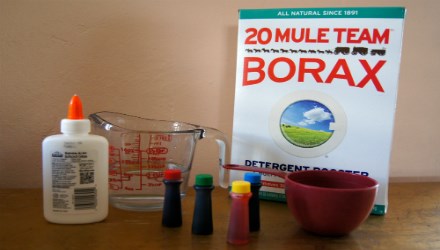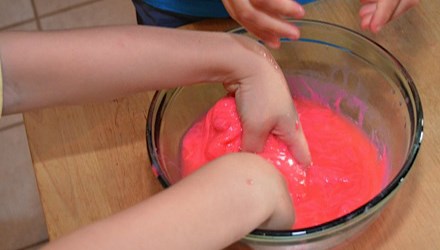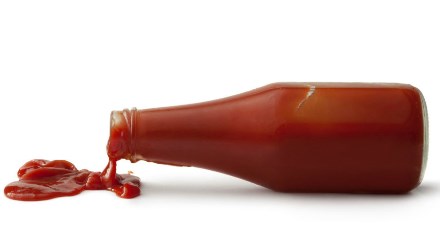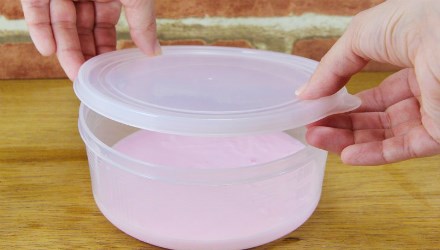Slime
Slime is an easy-to-do, fun activity that never gets old. There is something everyone loves about making a gooey and gross substance.
Here’s what you need
In order to make slime you will need the following items:
- 1 cup hot water
- 1.5 tsp. Borax (non-toxic/available by laundry detergents)
- 2 cups clear school glue
- 2 cups warm water
- 1 tsp. liquid watercolor

Here's what to do
Mix 1 cup hot water and 1.5 tsp. of Borax until dissolved. Set aside.
Mix 2 cups of clear glue and 2 cups of warm water together in a plastic bowl.
Using a spoon, slowly pour the Borax mixture into the glue mixture while stirring quickly. Stir until the mixture leaves the side of the bowl. Slime will be sticky. Knead the mixture with your hands until it is no longer sticky. The more you work with it the firmer it will become.

What's going on?
Slime is an example of a cross-linked polymer. Polymers are long molecules consisting of identical repeating structural units connected by covalent chemical bonds.
School glue contains a polymer called polyvinyl alcohol. Borax acts as a cross-linking agent. It connects the long polymer chains at random locations. It’s this cross-linking that gives slime its characteristic feel.
Polymers can be naturally occurring or manmade. Examples of manmade polymers are materials like nylon, polyester, and polystyrene. Examples of naturally occurring polymers are proteins in our body like tubulin and actin. These proteins make up microtubules and microfilaments that serve as structural components within our cells.
The slime you find in the store and the slime you can make with this recipe are both non-Newtonian fluids.
What does 'non-Newtonian' mean?
All fluids have a property known as viscosity that describes how the fluid flows – commonly thought of as how thick or thin a fluid is. For instance, honey is much more viscous than water. When a fluid’s viscosity is constant it is referred to as a Newtonian fluid.
Slime is an example of a fluid whose viscosity is not constant, it changes depending on the stress or forces applied to it. If you pull it apart quickly, applying a large force, it becomes very viscous and will break in half. If you gently pour it, applying little force, it will flow like honey or molasses. This kind of fluid is called a dilatant material or a shear thickening fluid. It becomes more viscous when agitated or compressed.
Another non-Newtonian liquid is ketchup. Ketchup behaves in just the opposite way from slime. It becomes less viscous when agitated. Liquids like this are called thixotropic or shear thinning. If you leave a bottle of ketchup on a shelf, it becomes thicker or more viscous. Nearly everyone has experienced this while trying to pour the liquid from a new bottle – it refuses to move. If you shake the bottle or stir it up it becomes less viscous and pours easily. 
Storage and safety guidelines:
Store slime in an airtight container when not in use. Slime is non-edible. When you are through with it, discard in a trash container. Do not wash down the drain.
